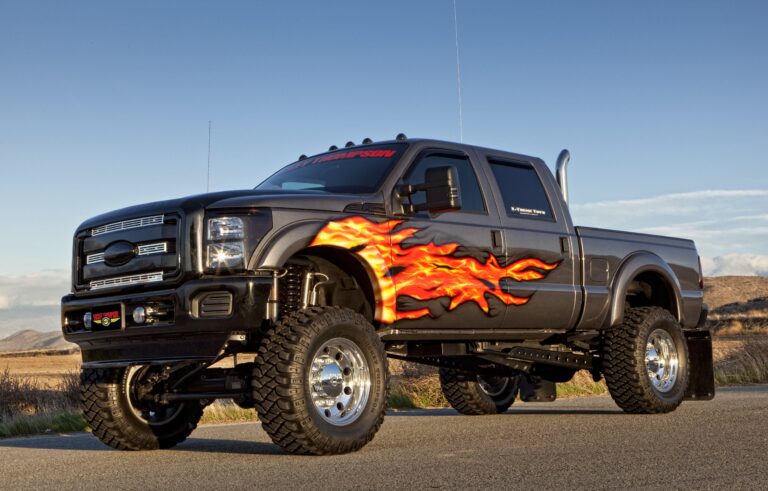Blue Book Value On Commercial Trucks: A Comprehensive Guide to Valuation
Blue Book Value On Commercial Trucks: A Comprehensive Guide to Valuation cars.truckstrend.com
In the vast and complex world of commercial transportation, understanding the true value of a truck is not just an advantage; it’s a necessity. Unlike passenger vehicles, where a quick search on Kelley Blue Book often suffices, assessing the "Blue Book Value" of a commercial truck involves a deeper dive into specialized resources and a nuanced understanding of market dynamics. This comprehensive guide will demystify the concept of Blue Book Value for commercial trucks, exploring its importance, the factors that influence it, how to determine it, and practical advice for navigating this critical aspect of the trucking industry.
Introduction: Defining and Understanding Commercial Truck Valuation
Blue Book Value On Commercial Trucks: A Comprehensive Guide to Valuation
When we talk about "Blue Book Value" for commercial trucks, we’re not referring to the familiar consumer guide. Instead, it’s an industry term that encompasses a range of professional valuation tools and data sources designed specifically for heavy-duty vehicles. These resources provide a benchmark for the fair market value of used commercial trucks, considering their unique characteristics and specialized applications.
The accurate valuation of commercial trucks is paramount for numerous stakeholders:
- Buyers need to ensure they are paying a fair price and making a sound investment.
- Sellers aim to price their assets competitively to attract buyers while maximizing their return.
- Lenders rely on accurate valuations to assess collateral for loans and mitigate risk.
- Insurers use these values to determine coverage, premiums, and total loss payouts.
- Fleet Managers and Businesses leverage this information for asset depreciation, budgeting, trade-ins, and strategic fleet planning.

Without a reliable valuation, transactions can be fraught with uncertainty, leading to overpayment, under-selling, or financial miscalculations. Understanding "Blue Book Value" in this context is the cornerstone of informed decision-making in the commercial truck market.
What is Blue Book Value for Commercial Trucks?
The "Blue Book" for commercial trucks primarily refers to specialized publications and online databases that track market prices for used heavy-duty vehicles. The most prominent sources include:
- Truck Blue Book (now part of Randall-Reilly’s Commercial Trucking market intelligence): This is arguably the closest equivalent to Kelley Blue Book for the commercial sector. It provides comprehensive pricing data for a wide range of trucks, including heavy-duty, medium-duty, and even some light-duty commercial vehicles. It covers various body types, engine specifications, and regional market adjustments.
- NADA Used Car Guide (specifically the Commercial Truck Guide): NADA (National Automobile Dealers Association) also publishes guides for commercial vehicles, offering wholesale, retail, and trade-in values. These guides are widely used by dealerships, financial institutions, and insurance companies.
- Auction Results and Industry Data Providers: Beyond formal guides, real-world auction results (e.g., from Ritchie Bros., IronPlanet) provide invaluable, real-time market insights. Services that aggregate this data offer highly granular and current valuations based on actual sales.
- Dealer Networks and Industry Experts: Experienced commercial truck dealers often have an intuitive understanding of market values based on their transaction history and industry connections.


It’s crucial to understand that "Blue Book Value" is a guide, not an absolute, fixed price. It represents a range, reflecting average market conditions, and serves as a starting point for negotiations, which are always influenced by the specific truck’s condition, features, and the immediate market demand.
Why is Blue Book Value Crucial for Commercial Trucks?
The precise valuation of a commercial truck holds significant weight across various facets of the industry:
- For Buyers: It empowers buyers to negotiate confidently, knowing they are offering a price supported by industry standards. It also helps in budgeting for acquisitions and understanding the potential depreciation of their investment.
- For Sellers: Sellers can set competitive and justifiable asking prices, avoiding the pitfalls of overpricing (which deters buyers) or underpricing (which leads to financial loss). A well-supported price can expedite sales.
- For Lenders: Financial institutions rely on these values to determine the loan-to-value (LTV) ratio, assess the collateral’s worth, and manage risk associated with commercial truck financing.
- For Insurers: In the event of an accident or total loss, insurers use these valuations to calculate fair payouts, ensuring both the policyholder and the company are treated equitably.
- For Businesses/Fleet Managers: For large operations, tracking the "Blue Book Value" of their fleet assets is essential for accurate accounting, calculating depreciation, planning for replacements, and making informed trade-in decisions.
Factors Influencing Commercial Truck Blue Book Value
Unlike passenger cars, commercial trucks are highly specialized, and their value is influenced by a multitude of factors, often with significant impact:
- Make and Model: Reputable brands like Freightliner, Kenworth, Peterbilt, Volvo, International, and Mack often retain value better due to their perceived reliability, dealer networks, and parts availability. Specific models within these brands also have varying demand.
- Year of Manufacture: Newer trucks generally command higher prices due to updated technology, lower mileage, and longer remaining service life.
- Mileage/Engine Hours: This is perhaps the most critical factor. High mileage (often exceeding 500,000 miles for long-haul trucks) significantly depreciates value. For vocational trucks, engine hours can be more relevant than mileage.
- Condition (Physical & Mechanical): This encompasses everything from the exterior appearance (rust, dents, paint) to the mechanical integrity (engine, transmission, drivetrain, tires, brakes). A clean, well-maintained truck with no major issues will fetch a much higher price.
- Engine & Transmission Specifications: The specific engine (e.g., Cummins, Detroit Diesel, PACCAR) and transmission (manual vs. automatic, number of gears) play a huge role. Horsepower, torque, and fuel efficiency ratings are also considered.
- Axle Configuration & Gross Vehicle Weight Rating (GVWR): Whether it’s a 4×2, 6×2, 6×4, or 8×4 configuration, and its GVWR, determines its application and, thus, its value. Heavy-haul or specialized configurations can hold value well if demand is strong.
- Application/Body Type: The type of truck (e.g., day cab, sleeper, dump truck, flatbed, reefer, tanker, refuse truck, logging truck) dictates its primary use and market. Vocational trucks often have very specific markets.
- Optional Equipment & Features: Auxiliary power units (APUs), custom interiors, specialized suspensions, lift gates, power inverters, wet kits, and other add-ons can significantly enhance value if they are desirable to the target buyer.
- Maintenance Records: A complete and verifiable service history demonstrates diligent care and significantly boosts buyer confidence, often justifying a higher price.
- Market Demand & Economic Conditions: Fluctuations in freight rates, fuel prices, interest rates, and overall economic health can dramatically impact the supply and demand for commercial trucks, thereby affecting their value.
- Geographic Location: Values can vary regionally due to local industry demand, climate, and supply. For example, a heavy-duty snowplow truck might fetch more in a northern state than in a southern one.
How to Determine Blue Book Value for Your Commercial Truck
Determining the "Blue Book Value" for a commercial truck involves a systematic approach:
- Identify the Valuation Source: Start with recognized industry guides like Truck Blue Book (Randall-Reilly) or NADAguides Commercial Truck Guide. Many subscriptions are required for full access.
- Gather Comprehensive Vehicle Information:
- VIN (Vehicle Identification Number): Essential for accurate identification.
- Make, Model, Year: Basic identifiers.
- Engine Details: Manufacturer, model, horsepower, and any specific features.
- Transmission Details: Manufacturer, model, manual/automatic, number of speeds.
- Axle Configuration: e.g., 6×4, 8×4, single, tandem.
- Mileage/Engine Hours: Exact readings.
- Body Type/Application: Specify exact type (e.g., 72-inch sleeper, 18-foot dump bed, 53-foot reefer).
- Major Features/Equipment: List all significant optional equipment (APU, wet kit, liftgate, specific tire sizes, etc.).
- Accurately Assess Condition: Be honest and objective. Most guides use categories like "Excellent," "Good," "Fair," and "Poor." Consider:
- Exterior: Paint, body damage, glass, lights.
- Interior: Cleanliness, wear on seats, dash, sleeper.
- Mechanical: Engine performance, transmission shifting, brakes, tires (tread depth), suspension, frame integrity, fluid leaks, error codes.
- Maintenance History: Availability of detailed service records.
- Input Data into Valuation Tools: Use the online platforms or physical guides to input your truck’s specifications and condition.
- Interpret the Results: The output will typically provide a range of values:
- Wholesale Value: What a dealer might pay for the truck at auction or as a trade-in.
- Retail Value: What a dealer might sell the truck for on their lot.
- Trade-in Value: An estimate of what a dealer would offer in trade.
- These ranges account for profit margins, reconditioning costs, and market adjustments.
- Cross-Reference and Market Research: Crucially, don’t rely solely on one source.
- Check Comparable Listings: Browse websites like TruckPaper.com, CommercialTruckTrader.com, and IronPlanet.com for similar trucks currently for sale or recently sold.
- Review Auction Results: Actual auction sales data provides the most current real-world transaction prices.
- Consult Dealers: Get informal quotes from reputable commercial truck dealers in your area.
Practical Advice and Actionable Insights
For Sellers:
- Maintain Meticulous Records: A comprehensive service history is your strongest selling point. Keep receipts for all maintenance and repairs.
- Invest in Presentation: A clean, well-detailed truck, inside and out, creates a positive first impression. Address minor cosmetic flaws.
- Perform Pre-Sale Maintenance: Fix any known issues, especially those that might trigger a diagnostic code. Ensure tires are in good condition.
- Highlight Unique Features: If your truck has valuable upgrades (e.g., APU, custom interior, specialized equipment), emphasize these.
- Be Realistic: Price your truck competitively based on market data, not just your emotional attachment or original purchase price. Overpricing is the quickest way to deter buyers.
For Buyers:
- Always Get a Pre-Purchase Inspection (PPI): Have a qualified, independent mechanic inspect the truck thoroughly, especially the engine, transmission, and frame. This can uncover hidden issues and provide leverage for negotiation.
- Verify Maintenance Records: Don’t just take a seller’s word; ask for physical or digital records and cross-reference them.
- Compare Multiple Valuation Sources: Use Truck Blue Book, NADAguides, and market listings to get a holistic view of the truck’s value.
- Factor in Operating Costs: Beyond the purchase price, consider potential repair costs, fuel efficiency, and insurance.
- Negotiate Based on Facts: Use the valuation data and any findings from a PPI to support your offer.
For Lenders/Insurers:
- Utilize Professional Appraisals: For high-value or highly customized assets, a professional appraisal by an accredited appraiser can provide the most accurate and defensible valuation.
- Stay Updated on Market Trends: The commercial truck market can be volatile. Regularly review market reports and adjust valuation models accordingly.
Challenges in Valuing Commercial Trucks
Despite the tools available, valuing commercial trucks presents unique challenges:
- High Customization: Many trucks are purpose-built for specific industries (e.g., oil & gas, construction, refuse). Their unique configurations can make direct comparisons difficult.
- Rapid Depreciation: Especially in the first few years, commercial trucks can depreciate significantly, making initial valuation critical.
- Specialized Equipment: The value of specialized attachments (cranes, specific plows, complex hydraulic systems) is often difficult to ascertain and can be highly market-dependent.
- Limited Data for Niche Models: Less common makes, models, or highly customized trucks may have limited comparable sales data, making valuation more art than science.
- Market Volatility: Economic downturns, changes in freight demand, and fuel price swings can cause rapid shifts in truck values.
Illustrative Blue Book Value Range for Commercial Trucks (Simulated Data)
This table provides a hypothetical example of how different factors influence the "Blue Book Value" range. Actual values will vary significantly based on real-time market conditions, exact specifications, and the specific valuation source used.
| Truck Type & Configuration | Year | Mileage (Approx.) | Condition | Estimated Low Value (USD) | Estimated High Value (USD) | Key Factors Affecting Value |
|---|---|---|---|---|---|---|
| Sleeper Tractor (6×4) | 2018 | 450,000 | Good | $45,000 | $65,000 | Engine HP, Transmission (Auto vs. Manual), Sleeper Size, APU, Maintenance Records |
| Sleeper Tractor (6×4) | 2022 | 150,000 | Excellent | $90,000 | $120,000 | Engine Specs, Warranty Status, Technology Features, No accidents |
| Day Cab Tractor (6×4) | 2019 | 300,000 | Good | $35,000 | $50,000 | Engine Brand, Fleet vs. Owner-Op Spec, Tire Condition, Emissions System |
| Dump Truck (Tandem Axle) | 2017 | 200,000 | Fair | $40,000 | $55,000 | Body Material (Steel/Aluminum), Axle Rating, PTO/Hydraulics, Frame Condition, Rust |
| Refrigerated Truck (Box) | 2016 | 350,000 | Good | $45,000 | $60,000 | Reefer Unit Age/Hours, Box Insulation Quality, Door Seals, Engine Hours |
| Roll-Off Truck | 2015 | 250,000 | Good | $55,000 | $75,000 | Lift System Type/Capacity, Frame Integrity, Hydraulics, Body Condition |
Note: These are illustrative figures only and do not represent actual market values. Always consult professional valuation services for accurate pricing.
Frequently Asked Questions (FAQ)
Q1: Is Kelley Blue Book used for commercial trucks?
A1: No, Kelley Blue Book primarily focuses on passenger cars and light-duty trucks. For commercial trucks, the main industry standards are Truck Blue Book (now Randall-Reilly’s data) and NADAguides Commercial Truck Guide, along with real-time auction data.
Q2: How often do commercial truck values change?
A2: Commercial truck values can fluctuate relatively quickly, often influenced by economic conditions, fuel prices, freight demand, and supply/demand dynamics. Major shifts can occur quarterly or even monthly, especially for high-demand segments.
Q3: What’s the difference between wholesale, retail, and trade-in value?
A3:
- Wholesale Value: The price a dealer or professional buyer would pay to acquire a truck, often at an auction. It reflects the value before reconditioning and dealer markup.
- Retail Value: The price a dealer sells the truck for to an end-user after reconditioning, marketing, and accounting for profit margin.
- Trade-in Value: The amount a dealer offers a customer for their old truck when they purchase a new one. This is typically lower than wholesale value as it accounts for the dealer’s reconditioning costs and profit on the new sale.
Q4: Does geographic location affect the value of a commercial truck?
A4: Yes, absolutely. Demand for specific truck types (e.g., logging trucks vs. flatbeds) can vary by region. Local economic conditions, climate (which affects rust and wear), and regional supply/demand can all influence pricing.
Q5: Can I get an official appraisal for my commercial truck?
A5: Yes, you can hire a professional appraiser who specializes in commercial vehicles. This is often recommended for unique, highly customized, or high-value trucks, or for legal/insurance purposes, as it provides a certified, unbiased valuation.
Q6: How much does maintenance history impact value?
A6: Maintenance history significantly impacts value. A complete, verifiable service record demonstrates that the truck has been well-cared for, reducing perceived risk for buyers and often adding 10-15% or more to the value compared to a truck with no records. It builds trust and confidence.
Concluding Summary
Understanding the "Blue Book Value" of commercial trucks is an indispensable skill for anyone operating within the heavy-duty vehicle market. It moves beyond a simple number, representing a dynamic assessment based on comprehensive data, market trends, and the specific attributes of each truck. By leveraging industry-standard valuation tools, meticulously assessing vehicle condition, and staying informed about market fluctuations, buyers can make prudent investments, sellers can achieve fair prices, and financial institutions can manage risk effectively. In the ever-evolving world of commercial transportation, informed decision-making, underpinned by accurate valuation, is the key to success.




